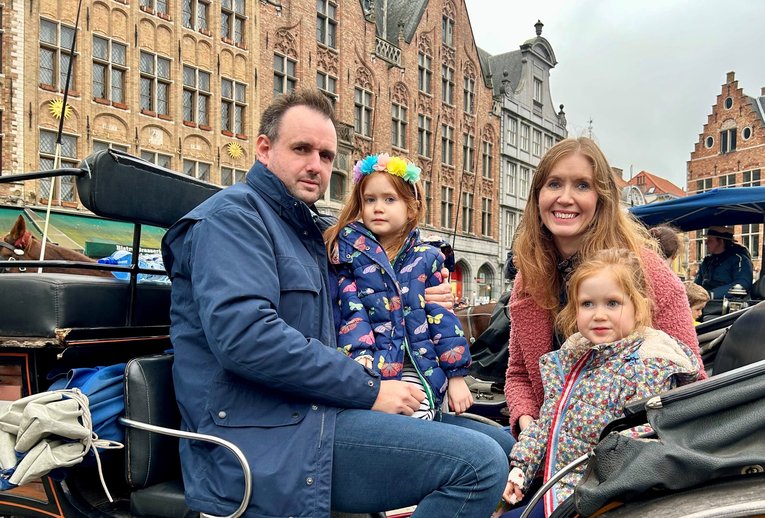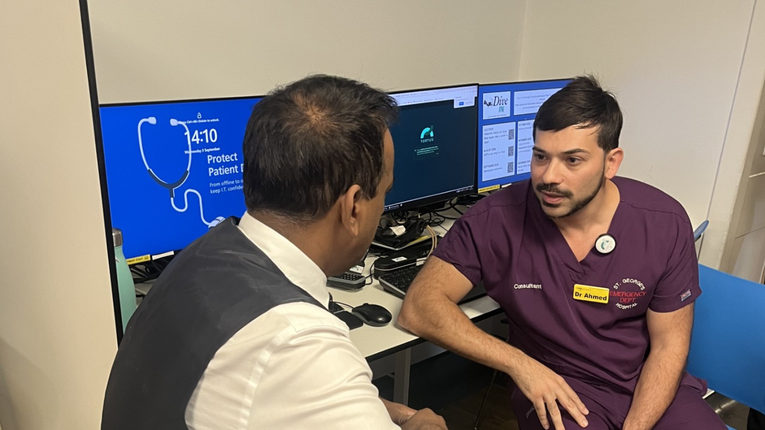
https://www.gosh.nhs.uk/news/researchers-grow-functioning-blood-vessels-scratch/
Researchers grow functioning blood vessels from scratch
9 Sep 2020, 4 p.m.
Human cells ‘sent back in time’ to behave as they did in the womb can be used to grow networks of blood vessels in the laboratory, according to research by an international team including the UCL Great Ormond Street Institute of Child Health (ICH). The findings mark a significant step forward in engineering tissue and organs to study disease, test treatments or, in the future, offer rejection-free transplants for children with organ failure.The study, led by Weill Cornell Medicine (WCM) in the United States, describes a new method for engineering blood vessels that can carry blood and adapt to their surrounding tissue, setting the stage for more complex organs and tissues to be grown in the lab.
Published today in Nature, the study also revealed key differences in the way blood vessels develop in tumours, opening up new potential for targeted cancer treatments.
From treatments to transplantation
Establishing a stable blood supply has long presented a barrier in the quest to engineer tissues and organs that behave as they would in a human body.
Such ‘organoids’ hold immense value for research, providing accurate laboratory models that can be used to study illnesses or test treatments. But they could also have unprecedented clinical impact by offering rejection-free transplants for patients with missing or damaged organs. Organoids can be created using a patient’s own cells, making them perfectly matched with no risk of rejection and without the need to wait for a matching donor.
‘There is a huge potential for organoids to open up regenerative medicine and advance how we treat children affected by devastating conditions,’ says National Institute of Health Research (NIHR) Professor Paolo De Coppi, Consultant Paediatric Surgeon at Great Ormond Street Hospital (GOSH) and Head of Surgery, Stem Cells & Regenerative Medicine Section at the ICH. ‘But any kind of engineered tissue requires a stable blood supply, so it’s vital that we find ways of creating functioning blood vessel networks.’
‘Our study describes a new method to grow stable blood vessels that are adaptable, tailored for their purpose and able to connect to surrounding tissues. We have a lot more work to do to ensure the approach is safe and effective, but this brings us a step closer to something that could be used in clinical settings to treat patients.”
Mapping highways of the body
Blood vessels deliver vital oxygen and nutrients to tissues around the body, helped by special endothelial cells that line their inner surfaces. When we are developing in the womb, endothelial cells have the potential to change shape and form – an ideal condition for growing new networks of blood vessels to supply our developing organs. But as we grow older, endothelial cells lose that flexibility and become fixed in their form.
The research team took human adult endothelial cells and ‘switched on’ a genetic instruction known to be particularly active in early endothelial cells. It sent the mature cells ‘back in time’ to a more primitive and flexible state, a bit like resetting their memory.
“Adult endothelial cells don’t know how to make new blood vessels from scratch,” says first author Dr. Brisa Palikuqi, formerly of WCM and now at the University of California. “Our idea was to reset vascular endothelial cells (abbreviated as R-VECs) to an earlier fetal state in which they can adaptively form new vessels based on signals from the surrounding tissue. Thus, they are re-educated to perform various specialized endothelial cell functions. With a 3-D platform, which we call ‘Organ-On-VascularNet’, we can use R-VECs to build tissue-specific blood vessels that may help regenerate organs.”
The team used advanced imaging technology to watch these vessel networks develop (See image above). “Three-dimensional visualization of human blood vessels actually being assembled and sculpted in real time, has been an obstacle to overcome,” said Dr. Ryan Schreiner, assistant professor of cell physiology research in ophthalmology and director of the Visual Function Core at WCM. “The capacity of R-VECs to self-organize and form blood vessels, which then carry human blood is educational and marvelous to watch.”
One of the study’s key findings is that R-VECs can be used to populate ‘scaffolds’ – support structures made by stripping tissue of its living cells. Scaffolds are used widely in tissue engineering as neutral frameworks upon which patient cells can be seeded to create functioning tissues and organs. But until now, researchers have struggled to show endothelial cells forming long-lasting blood vessels on these scaffolds. Professor De Coppi says: ‘We’ve shown that R-VECs do engraft in both in large and small vessels, increasing the chances for the engineered organs to functionally survive once transplanted.’
Blood vessels and disease
As part of the study, R-VECs were added to tumour tissue taken from patients, where they developed rapidly into networks of blood vessels. But the networks were dense and poorly organised compared to those seeded in healthy tissue.
Crucially, this suggests that the vessels helping to keep tumours ‘alive’ may have unique characteristics. If treatments were designed to target these markers, they could lock onto cancer and leave healthy tissues untouched.
R-VEC vessel networks are also being used to study how COVID-19 causes damage to organs. ‘We are utilizing the R-VEC vascular network to investigate how the SARS-CoV-2 virus wreaks havoc on small blood vessels within organs, setting the stage to formulate new therapeutics for this disease,’ said Dr. Robert E. Schwartz, assistant professor of medicine in the Division of Gastroenterology at WCM.
Pushing forward safely
While clinical applications are a way off, tissue engineering is already providing a vital platform for modelling diseases and testing new drugs and treatments. This latest breakthrough brings researchers one step closer to engineering whole organs and tissues that perform as they would in a healthy body.
It is one of a series of recent developments involving Professor De Coppi’s pioneering team at GOSH and the ICH, who just this week published news of human intestinal tissue grown using stem cells from patient tissue. One day, this could lead to personalised transplants for children with intestinal failure, sparing them a lifetime of health issues.
The NIHR GOSH Biomedical Research Centre supported the work using human cells. Professor Paolo de Coppi is supported by National Institute of Health Research (NIHR) Professorship, the INTENS Horizon2020 programme, and Oak Foundation, via Great Ormond Street Hospital Children’s Charity (GOSH Charity).
Dr. Shahin Rafii is the founder and a non-paid consultant to Angiocrine Bioscience. Dr. Robert Schwartz is a paid consultant for Miromatrix Medical Inc., a company focused on eliminating the organ transplant waiting list by bioengineering transplantable organs, including liver, kidney and heart.

Scientists discover clues to help children with rare muscle disease
New ground-breaking research by experts at Great Ormond Street Hospital (GOSH) and University College London (UCL) has led to an exciting discovery that could help children with the rare muscle disease, juvenile dermatomyositis (JDM).

GOSH-led trial of AI-scribe technology shows ‘transformative’ benefits for patients and clinicians across London
A major GOSH-led study has found that AI-scribing technology can significantly reduce clinician workload while improving patient care

What do bush babies, tamarin monkeys, and mouse lemurs have that humans don’t?
GOSH imaging researchers have worked with teams in Harvard in the USA to work out how and when our pelvises developed to be different from other animals.

Nanodiamonds and hormones used in rare condition to promote lung growth
An international research team led by GOSH, UCL and KU Leuven in Belgium, is using 3D-printing and nanodiamonds, to design treatments that could help babies repair their damaged lungs in the womb.
